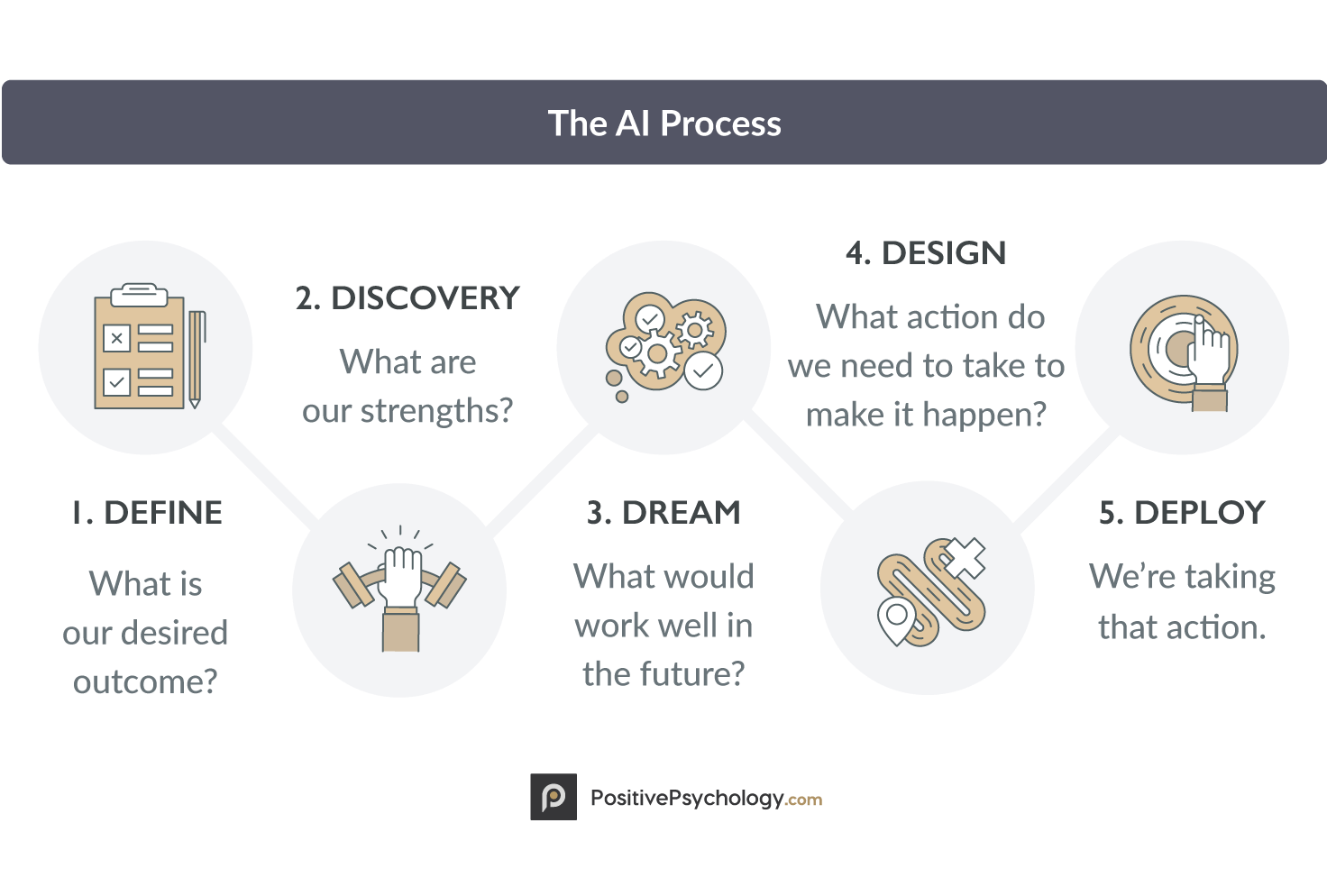

Objective: According to the US Environmental Protection Agency (EPA) "Appreciative Inquiry is a facilitated process to discover past and current practices that inform and inspire participants as they strive to collaboratively create and implement an ideal future. Unlike many decision-making processes that focus on what is not working, Appreciative Inquiry focuses on what is already working or and where people want to increase what is working. It does not focus on the identification or solving of problems, but rather envisioning and creating a positive future. It involves selecting topics of shared interest for inquiry, conducting structured interviews to bring out stories that reveal the best of the past – or what has worked – and identifying themes to help plan the future. Appreciative Inquiry is a systematic process that uses the art and practice of asking questions and building upon stories to foster innovation and imagination" (www.epa.gov).
David Cooperrider, co-creator of the Appreciative Inquiry (AI) method, underscores the importance of the positive core in explaining the 4-D cycle of AI. According to Cooperrider "The first step in an AI intervention is selecting the affirmative topic choice. This is, in short, the selection of topic(s) that will become the focus of the intervention." More information can be found on his website https://www.davidcooperrider.com/ai-process/.
Challenges to Consider:
Principles for Successful Planning:

| Participation level | Target groups | Number of participants | Duration/Timeline | Implementation | Frequency | Budget |
|---|---|---|---|---|---|---|
| Consultation | Any | More than 300 | Longer than a week | Live event | Any | Medium |